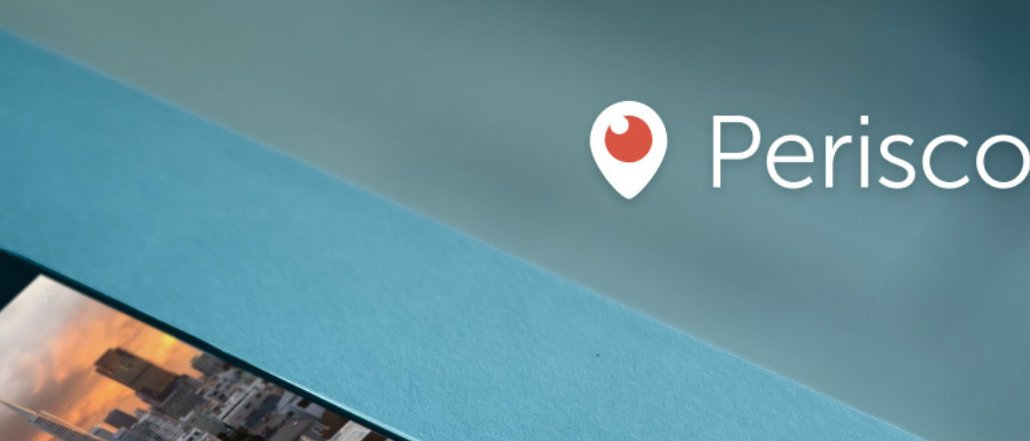The first Periscope star shows the live streaming platform doesn’t need Twitter

Amanda Oleander is Periscope’s first, true native star. The LA-based freelance artist, known for her vlog and city-guide videos, has more than 250,000 followers and 30 million “hearts” (Periscope’s version of a like or favorite), which dwarfs what more recognizable names like BuzzFeed and Channing Tatum have earned on the live-streaming video platform.
With her massive presence on Periscope, one would assume she has an equally sizable audience on Twitter. Twitter, after all, acquired Periscope earlier this year to expand into live video, and Periscope users generally announce they are going live on the video platform by tweeting a link to the stream. And yet, Oleander only has slightly more than 6,300 followers on Twitter.
Oleander proves one of the emerging truths about the relationship between Twitter and Periscope — while both are inextricably linked, the two platforms aren’t as close as one might think.
Periscope does not equal Twitter, and vice versa.
There is more data to support this. According to Keyhole, a company that tracks activity and conversations on social media platforms, there isn’t a high correlation between the number of followers a user has on Twitter and the engagement he or she sees on tweets containing links to Periscope live streams.
“What this indicates is that people’s influence on Twitter does not necessarily carry over to Periscope,” said Saif Ajani, co-founder of Keyhole. Sure, it’s not uncommon for a person with a higher Twitter following to also have a lot of fans on Periscope. But having fans is one thing, having engaged fans — aka viewers — is another.
For instance, Keyhole’s findings show the girl group Fifth Harmony, which has nearly 2.3 million Twitter followers, averaged 2,806 retweets for every tweet directing followers to a Periscope live stream in the last 30 days — the highest of any user with both a Twitter and a Periscope account. Compare that to Hollywood golden boy Channing Tatum, who has more than 7.3 million Twitter followers but averaged only 286 retweets per Periscope link in the same time frame.
There’s more: BuzzFeed, which espouses an all-platforms strategy in terms of how it approaches content distribution, has 2.4 million Twitter followers. It has averaged nine retweets for every tweet linking to a Periscope video in the past 30 days.
Granted, that data is only judging engagement by retweets. The Periscope data, however, reasserts the lack of a true link between Twitter and Periscope. BuzzFeed has 93,000 followers on Periscope and 184,000 “hearts” (Periscope’s version of likes/favorites, which some say is more important than a user’s number of followers); Tatum with 7.3 million followers on Twitter has 29,000 on Periscope, with 299,000 hearts; Fifth Harmony also has 29,000 Periscope followers but blows both out of the water with more than 620,000 hearts.
Oleander was first, but more native Periscopers will emerge.
Ronald C. Pruett, Jr, co-founder of Roker Labs, a newly launched research and marketing division inside weatherman Al Roker’s production company focused on live streaming video platforms, believes Oleander is just the beginning of a new wave of stars native to Periscope. “You look at YouTube and all of its native stars; Vine has its own stars. You are going to see a whole new ecosystem of influencers form within the live streaming platforms,” he said.
Because Periscope is still fairly new, it might even be easier for budding stars to grab audiences and hearts on the platform. “The search capability isn’t fantastic,” said Pruett. “If you get out there and tag yourself properly, you will likely find an audience. It’s why I think folks who don’t have the biggest Twitter following are still able to garner one on live streaming platforms.”
What seems likely is that Periscope and other live streaming platforms will follow in the footsteps of YouTube and Vine, where consistent publishing will lead to a larger following. Early data from Roker Labs certainly suggests so:

“There is definitely a positive correlation” between the publishing frequency and audience size, said Ajani. “I’m not sure if it’s statistically significant yet; … if I share something once a month, people might forget and not remember if it was interesting. Whereas if I’m streaming regularly, even if the topics are different, there can be a predictable interesting-ness that drives people to engage more with your content.”
More in Media

Podcast companies turn to live events to capture growing advertiser spend
The surge in the number of live podcast events in 2025 reflects a broader shift: advertisers are betting bigger on podcasts — not just as an audio channel but as a full-fledged creator economy play.

Media Briefing: ‘Cloudflare is locking the door’: Publishers celebrate victory against AI bot crawlers
After years of miserably watching their content get ransacked for free by millions of unidentified AI bot crawlers, publishers were finally thrown a viable lifeline.

How Vogue could navigate potential industry headwinds as Anna Wintour — who agency execs say made ad dollars flow — brings on new edit lead
Anna Wintour’s successor at Vogue will have to overcome the myriad of challenges facing fashion media and the digital publishing ecosystem.





